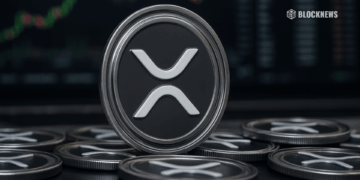- U.S. Commerce Department publishes GDP and economic data on-chain with Chainlink and Pyth.
- Data feeds already live across nine major blockchains including Ethereum, Solana, and Bitcoin.
- Move signals a new era of transparency and government blockchain adoption.
The U.S. government just made a bold move into blockchain. The Commerce Department (DOC) has partnered with Chainlink and Pyth Network to deliver official economic and financial data directly on-chain. This marks one of the largest steps yet in using blockchain for government-level reporting, setting the U.S. apart as a leader in transparency and tech adoption.
Commerce Secretary Howard Lutnick didn’t hold back, calling President Donald Trump “the Crypto-President” while emphasizing that making GDP statistics public on the blockchain ensures America’s economic truth is “immutable and globally accessible.” Lutnick even highlighted the 3.3% GDP growth as part of this new data release.
Blockchain Partnership With Chainlink and Pyth
According to the announcement, both Chainlink and Pyth have been working with the DOC for months on this initiative. Mike Cahill, founder of Douro Labs and contributor to Pyth, said the project proves how on-chain government data can fuel new waves of innovation and adoption. “We’ve entered a new era,” Cahill said, praising the DOC’s efforts to modernize data distribution.
GDP and Inflation Data Now Live On Nine Blockchains
The integration initially spans nine networks, including Bitcoin, Ethereum, Solana, TRON, Stellar, Avalanche, Arbitrum One, Polygon PoS, and Optimism. Chainlink’s own blog added Base, Botanix, Linea, Mantle, Sonic, and ZKsync as further supported ecosystems.
Through Chainlink’s decentralized oracle feeds, the Bureau of Economic Analysis (BEA) has already published six indicators on-chain. These include GDP, inflation, and domestic demand—updated monthly or quarterly in sync with BEA releases. The rollout signals the beginning of what could be a much larger system of public blockchain-based government reporting.
Expanding Transparency Through Blockchain
Officials noted that additional blockchain networks may be added in the future depending on demand. The broader goal, according to the DOC, is to extend this transparency-first model into other agencies, ensuring public access to reliable, tamper-proof economic statistics.
It’s a striking moment for blockchain adoption—one that shifts the narrative away from speculation and towards real-world utility at the federal level.













